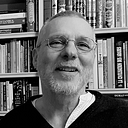Member-only story
LIFE LESSONS | PHILOSOPHY | MAHAYANA BUDDHISM
Thirty-six lessons from a crying Lama
(How to find meaning in life through the practice of compassion)

The present story is a brief, personal rendering of the 36 Practices for a More Meaningful Life by Exercising Compassion by Lama Gyalsé Tokmé Zangpo (official spelling: Thogs med bzang po), a mystic, philosopher, and epistemologist who taught in 14th century CE.
To most of my readers, it is no secret that I have spent a large part of my adult life studying and teaching Buddhism. Much of this was in Sri Lanka, where I lived for some time in a jungle hermitage in Buduruvāgala, occupied with reading and memorizing the Suttanipāta discourses and other Theravāda texts under the guidance of my mentor Rev. Obbegoda Dhammatilaka Thera. At other times, I stayed put for a few months every year in Bodhgāyā (Bihar, India), I traveled and studied Mahāyāna philosophy and practices in Nepal and Tibet, and I explored Zen teachings in Japan.
I was introduced to the teaching of Gyalsé Tokmé Zangpo through a dhamma talk presented by the 14th Dalai Lama in Bodhgāyā in 1974. In the course of three consecutive days, the Dalai Lama expounded the teaching of this rather obscure Tibetan Kadampa mystic who (at that time) nobody had heard very much about.
And yet, oral transmission ascribes to the historical Thogs med bzang po (1295–1369) a most colorful personality. He was born on the slopes of the Phul byung brag skya hills, in the country of Sakya, roughly halfway between Mount Everest to the South and the Tibetan city of Shigatse to the North. At the age of nine, the yakherd boy left his family's grazing lands and went to the Bsam gling monastery, where he learned how to read and write. From there, he continued his education at Sakya Gompa, the main Kadampa monastery, studying and teaching pramāṇa, or, in Tibet, tshadma (epistemology), which would be his main field for many years to come. By the age of twenty-three, he had earned for himself a reputation for his scholarship in the works of the Bengāli mystic and founder of the Kadampa school Atiśa Dīpankara Śrījñāna.
In 1337, already famed for his profound knowledge and educational skills, he moved to a hermitage in the wild lands of Dngul chu chos rdzong, where he…
